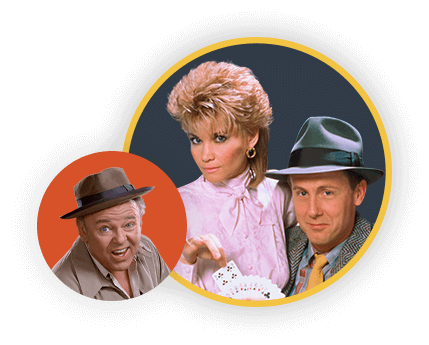A brief history of the Wild Wild West's most overlooked star, its locomotive train

Humans get all the credit. Sure, sometimes an animal can become a beloved cast member of a TV show. But they never showed the real name of the horse in the Mister Ed opening credits, nor did Higgins the dog have his name at the start of Petticoat Junction. What would those 1960s sitcoms have been without those beasts?
Speaking of Petticoat Junction, there was another vital, uncredited regular on the show. It could be seen — and heard — at the start of each episode. It was a celebrity in and of itself, at least in some circles. We're talking about the train, the Hooterville Cannonball. An antique steam locomotive "played" the part of the Cannonball. It was the Sierra No. 3, built in 1891, often noted as the "most photographed locomotive in the world." With good reason. This iconic workhorse started its big screen career in silent films, before chugging onward to talkies like The Virginian with Gary Cooper, speeding through dozens of Westerns, cruising along through modern favorites like Back to the Future Part III and Unforgiven. Sierra No. 3 also turned up in loads of TV shows, from The Lone Ranger to Doctor Quinn, Medicine Woman.
In 1965, the same train was used in the pilot of The Wild Wild West, "Night of the Inferno." Secret Service agent Jim West traveled in his own private rail car, a mobile base fit for the expensive tastes of James Bond or Bruce Wayne. There was just one minor problem. The Sierra No. 3 was an anachronism. The beauty was built in 1891, as we mentioned, about a decade or two after the adventures of Jim West.
Never fear, nitpickers. Once the series went into production, a new train was used. Well, an older train, actually. This souped-up choo choo was named Inyo, constructed in 1875 in Philadelphia. The Inyo spent its early professional life in the service of the Virginia and Truckee Railroad in Nevada. But we want to focus on its Hollywood fame.

As fans of The Wild Wild West know, the trusty train, dubbed The Wanderer, can be spotted in most episodes. The Inyo was numbered on the front of its engine with a "22." Producers of The Wild Wild West wisely changed that to "8," so that shots of The Wanderer could be flipped without the number looking backwards. Not every production was so sharp. As for the swanky interior of the train, that was a set, erected on Stage 6 at CBS Studio Center. Green velvet curtains with golden tassles hung in every window, under ornate woodwork. It got a makeover in season two, going even lusher. Green glass sconces illuminated the creamy walls. It's a distinctive interior. Which is how keen TV fans can easily spot it in other shows.

The interior set was used on The Big Valley, at least twice, as seen here behind a dancing Lee Majors in the 1966 episode "Last Train to the Fair." It also popped up in a more contemporary tale in 1968, when Maxwell Smart posed as a king who was his dead ringer in "The King Lives?" That memorable episode is also notable for featuring Johnny Carson in a bit role. In both cases, you can identify the train interior from the curtains.
When the Inyo rolled into Dodge City in 1967, however, it was harder to spot. The Wild Wild West train is the centerpiece of the Gunsmoke episode "Death Train," when passengers quarantined inside the car for fear they have the plague. At the start of the episode, as the train toots through the mountainside, you can spot the number "8" on its side.

In the subsequent shot, as the train pulls into the station, we see the Inyo head on — and the number "22" is on the front of the engine. Backwards. So that's why they made it an "8."
The set continued to get use after the end of The Wild Wild West, which wrapped production in 1969. Notably, and appropriately, it turned up in Barbary Coast, the short-lived William Shatner adventure series from 1975 that was quite similar in concept to The Wild Wild West.
In 1978, the Inyo went into semi-retirement, heading up to the Nevada State Railroad Museum in Carson City. After a restoration in the early 1980s, the old train sometimes came out onto the tracks for special occasions. However, its spycraft days are over.




